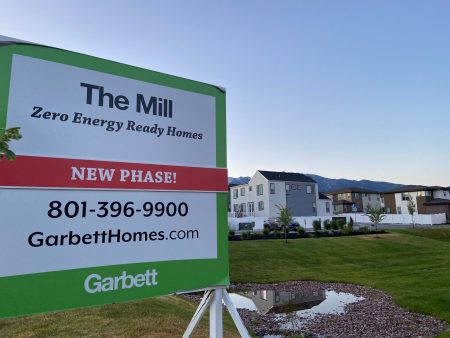Key takeaways
- Homeowners living in areas with high wildfire risk may have difficulty finding adequate home insurance coverage and face higher premiums.
- Shopping around with multiple carriers, looking for discounts and reducing your home’s fire exposure may help you find more affordable coverage.
- Installing a fire-resistant roof, retrofitting your home and creating a defensible area may reduce your home’s burn risk.
- Wildfire may be an excluded peril in insurance policies for homes in high-risk areas.
- More than one-third of the U.S. population live in counties with high wildfire risk.
As of August 2025, nearly four million acres have already been burned by wildfires, and there have been a total of 44,470 known wildfires this year to date. While those numbers are below last year’s total, the damage caused this year in California alone already exceeds previous years. Wildfires are becoming increasingly problematic, and so too is insuring properties against this threat. One-third of the U.S. population lives in counties with high wildfire risk, but California has seen some of the most prominent insurance market convulsions around fire risk and home insurance. Carriers are limiting coverage due to this threat in sections of other states as well, like in rural Oklahoma. With wildfires becoming increasingly dangerous to homeowners and coverage becoming more complicated to find, it’s vital to understand the fire risks to your home and the insurance options available.
How fire risk affects homeowners insurance costs
According to the National Interagency Fire Center (NIFC), 64,897 wildfires affected over 8.9 million acres in the U.S. in 2024. These numbers, together, are the highest since 2017, when 71,499 fires affected 10 million acres. In 2025, the LA wildfires alone are estimated to have caused between $28 to $53 billion in property damage. Areas prone to this type of wildfire risk create a challenging insurance landscape.
When determining home insurance rates, most insurance companies will review the home’s location and the surrounding area’s features. Neighborhoods close to wildfire zones or in wildland urban interface locations are more at risk of damage or total loss. The higher the disaster risk, the higher the home insurance premium typically is, often making homeowners insurance in fire-prone areas relatively expensive. As rising temperatures and more frequent droughts spread across the U.S., areas that were once unaffected by wildfires are becoming at risk for this type of natural disaster.
Due to the cost of disaster payouts, higher premiums passed down from reinsurance companies and uncontrollable future wildfire losses, some of the biggest insurance companies are pausing new home insurance policies, increasing rates and restricting eligibility and coverage caps. State Farm and Allstate have paused accepting new home insurance policies in California, while Farmers, USAA, Travelers and Chubb have limited new policies and increased requirements. With fewer companies sharing the risk, the remaining insurers may increasingly limit availability to certain ZIP codes and increase premiums to maintain financial solvency.
How to get home insurance in high-fire-risk areas
While it may be more difficult to find home insurance in high-fire-risk areas, these tips may help:
- Ask your neighbors. It may be helpful to ask neighbors for the names of the companies that insure their homes. By doing this, you can build a list of potential carriers that may also be willing to insure your home. Plus, you can generally assume the insurer offers policies in your ZIP code, although you won’t know for certain until you request a quote.
- Shop around with more than one carrier. Experts often recommend shopping around between multiple carriers to get competitive rates, but doing this can also help you find which providers will offer home insurance for your property. It can help to start with a list of insurance companies that operate in the region and which have not made statements about pausing or restricting home insurance coverage in the area. Many insurers who have reduced coverage options due to fire risks have made public statements to that effect.
- Take advantage of discount opportunities. While this may not help directly with high-fire-risk homeowners insurance, finding ways to lower your premiums can help make out-of-reach insurers more affordable. If the carriers that offer coverage in your high-fire-risk area are too expensive, look at their websites to see if they offer discounts or other ways to reduce your costs. With many carriers, discounts can be stacked to create a significant reduction in policyholder costs.
- Consider a FAIR Plan. While in many cases a temporary solution, purchasing homeowners insurance coverage via your state’s FAIR Plan may be one way to obtain coverage while you search for a permanent option. However, FAIR Plan coverage may not be as robust as a private insurer policy and may also be more expensive than private coverage.
- Reduce your home’s burn risk. Installing fire prevention features may help you find more affordable coverage by reducing your home’s fire risk. Some updates can be simple, like swapping the mulch in your garden for gravel, or more expensive, such as updating your siding to a fire-resistant material.
How to reduce the risk to your home in a fire-prone area
In addition to helping you secure lower home insurance rates, reducing your home’s fire exposure may also help reduce your losses in the event of a fire. Some strategies for reducing your home’s burn risk include:
- Installing a fire-resistant roof: Fire-resistant roofs could help with mitigating fire damage to your home. Materials that typically qualify for Class A roof coverings include concrete or clay tiles, fiberglass asphalt shingles or metal roofs.
- Retrofit your home: CalFire, California’s Department of Forestry and Fire Protection, has a list of ways you can retrofit your home to protect against wildfire. You may be able to retrofit vents, windows, walls and even rain gutters and fences to reduce your fire exposure risk.
- Create a defensible area around your home: The key to this strategy is to remove any vegetation that might be flammable away from your home. This could include clearing away plants and shrubs from windows, decks, balconies and stairs as well as removing other potential hazards near the exterior of the home that might catch on fire, including mulch, pine straw, firewood or debris.
- Plan for water access: When preparing to evacuate your home, fill tubs with water and place buckets of water in different areas of the house. For the exterior, connect long garden hoses or sprinklers to water spigots for firefighters to immediately access additional water.
Your fire prevention strategy will look different based on your home type and location. Speaking with your local fire department may help you find other ways to protect your home, such as making sure your address is clearly marked and visible from the street. There may also be local or state grants available to help with the costs of fire-prevention measures.
Frequently asked questions
Why we ask for feedback
Your feedback helps us improve our content and services. It takes less than a minute to
complete.
Your responses are anonymous and will only be used for improving our website.
Help us improve our content
Read the full article here












